” Using the right HRV tracker will help you better understand your body and how it responds to particular workouts, daily stressors and even your food choices. It’s truly the future of fitness technology “
I’m sure you have seen it at one point in time: the biggest celebrities showing you their crazy workouts and how they get in and stay in great shape. Everyone from The Rock, Mark Wahlberg, and even Kevin Hart and Kim Kardashian. But how do YOU know which workout regime is right for you, if any? Because we all know Hollywood will never reveal their secrets. Luckily, there is a fitness tracker that can show you how your body is responding to a particular workout and the decisions you make daily.
Don’t Ignore Your Body
It’s safe to say that the main reason people follow these workout plans and exercises is to achieve a desired look. Whether it’s to slim down, build a bigger chest and arms, or get that 6-pack they’ve always wanted. Aside from the aesthetics, people also want something convenient. But very seldom do people think about how these workouts affect their bodies internally. Maybe this was okay in the past, but nowadays with the advent of new technologies like heart rate variability, your internal health cannot be ignored.
Over the past couple of decades we began seeing new fitness trends and quickly began seeing studies and research that supported these new trends. Crossfit has seen quit the meteoric rise. Many claimed that these workouts boost your metabolism and the American Council on Exercise (ACE) claims it can help you burn more calories throughout the day.
Hot yoga is also a big one. It’s great for your mood, helps in maintaining a balanced metabolism and also aid in weight loss. And the list goes on and on from indoor cycling to water fitness. But the question is, what works best while causing the least damage to ones health? Surely with the vast amount of research and resources we have today (i.e. fitness trackers and other health technology) we can figure out the answer to that question.
Research and clinical studies are usually generalized. Meaning, it provides a conclusion based on the average human being. But everybody is different. This is where fitness trackers and other wearable devices come in. They are better able to provide personal biofeedback that is unique to each individual.
HRV Fitness Tracker
Top fitness tracker companies like Fitbit and Garmin provide maybe one tool that can help: heart rate. It’s been used for years and you can use it to see your resting heart rate aaaand that’s about it. According to research, resting heart rate is not a reliable marker for overall health. While these products are okay, they don’t exactly provide a full picture of your health.
The one tool that can actually do this is called heart rate variability (HRV). It’s quickly becoming the holy grail of fitness monitoring technology. HRV has been around for decades and is a measure of your overall aerobic capacity, among many other things. In technical terms, heart rate variability measures the time difference (in milliseconds) between each successive heartbeat. Because scientists in the 18th century actually discovered that distance between each beat was different. And according to recent research, that information gives us a deep insight into your health.
But before we tell you how HRV can help, a bit of an explanation first.
It all begins with your nervous system (see chart below). It’s essentially what’s making your body run on a day-to-day basis. Much like a system (duh…) that connects every single part of body internally to one another from your brain, heart, lungs, nerves etc. it turns your internal “wiring” into a beautifully functioning ecosystem.
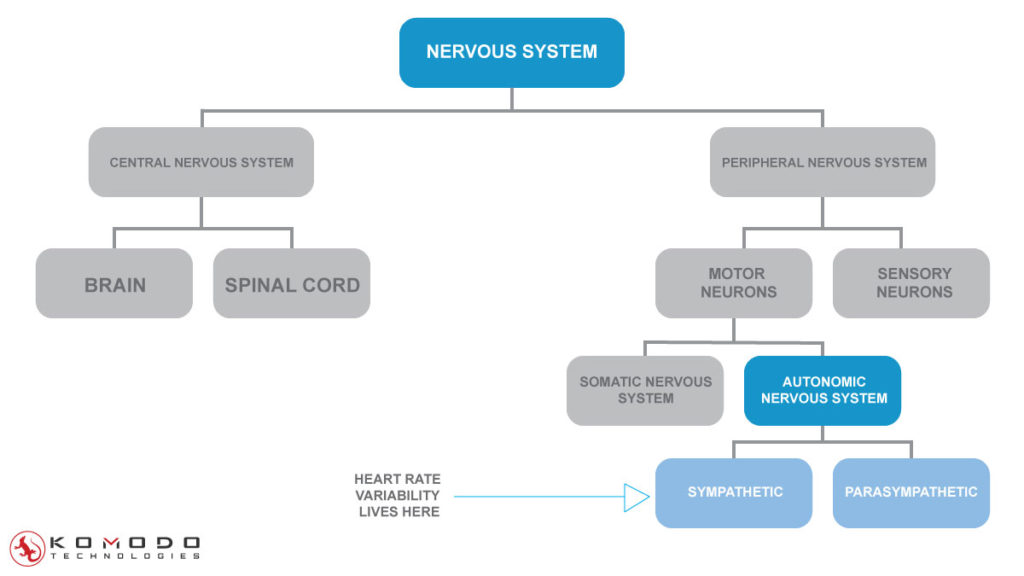
Slightly further down that chart, we run into the somatic nervous system and the autonomic nervous system. The prior is the part of your brain that controls voluntary movement. So, things you can control like lifting up your hand or kicking a ball. Now the latter deals with the most primitive part of your brain, the part that you can’t control. Things like sweating, heart rate and digestion. This is the part of the nervous system that can be gauged by using heart rate variability.
One last thing: the autonomic nervous system is further broken down into two parts; the sympathetic and parasympathetic. The prior is activated in times of stress, in this case, activity. The latter is activated during rest and recovery. So now, where does heart rate variability come in?
If your heartbeat is static, so it doesn’t vary beat-to-beat, this is very bad. Healthy hearts usually are sporadic, or variable. That’s healthy. So when your heart rate is static, HRV is low. When heart beat changes drastically, beat-to-beat, HRV is high (which is good)
Think About This…
The best way to think about HRV is that anything that triggers a ‘stress response’ from your brain is captured by HRV. Everything from exercise, unhealthy food, emotional stress, anxiety (public speaking is a good example). These all elicit stress responses, meaning that your sympathetic nervous system is being activated. Once you calm down or recover, HRV will rise back to normal triggering a parasympathetic response. Using an HRV tracker is the only way we have to capture these stressors.
Heart Rate Variability and Recovery

Research shows that when you exercise, HRV will automatically go down, which is fine. It’s simply your body responding to stress (physical stress in this example). Now what is important is how quickly your HRV can bounce back to its baseline.
For years, pro athletes in the NFL, NBA and others have been using some sort of heart rate variability fitness tracker to monitor recovery. Once athletes have figured out their baseline (their general HRV score at rest / in the morning) they know what level they should be at before the next workout. Most consumer products display an HRV score out of 100, then there’s the AIO Sleeve, which shows a 5-star score.
HRV Tracker and Pro Athletes
So let’s say an NFL running back has a baseline HRV of 92 and once he has a training session it goes down to 30. Ideally, the trainer should let him fully recover and get back to 92 so optimize the next workout and improve efficiency. This is even more so important for the game. These athletes need to be in 100% condition, internally to get the most out of them. In fact, many NFL teams and athletes already use some type of HRV tracker throughout training.
HRV is an even better tool for the every day person who exercises. You are in control of your own routine and recovery. Use it to see what tactics help speed up this recovery process. Because other everyday stressors like work, poor sleep, and poor diet affect HRV. Change other aspects of your lifestyle to optimize your routine.
Heart Rate Variability and Over Training
This kind of falls in line with the prior point. If you are not recovering from previous activity, then you are at risk of over-training your body. Not allowing your heart rate variability to get back to its baseline will cause great harm to your body. If this becomes a pattern and day after day you aren’t fully recovering, it will surely cause negative health effects in the long-term.
During your exercise or activity, HRV will always be low. If it’s an intense workout, guaranteed that your HRV score will be close to zero. Intuitively, this makes sense because exercise is considered a stressor. It’s not a bad one but it puts your body in fight-or-flight mode. What you want to do is constantly measure your heart rate variability after exercise. Measure it half hour, one hour and then a few hours after your workouts to see how fast your body is recovering (getting back to it’s baseline). It’s very easy to over-do training and then you feel sluggish and lethargic for days. If you optimize your training you can operate like a well-oiled machine.
Not Just for Athletes…
It doesn’t matter whether you are a pro athlete or not, using a fitness tracker to monitor HRV is extremely important. We all know that stress is bad, and HRV gives us true insight into all kinds of stress. Now, if you are constantly stressed, it compromises other body function like digestion, heartbeat, dealing with illness and much more. If HRV is off, it might be getting in the way of your aesthetic goals to have those washboard abs.
Think of a vehicle; if the engine isn’t operating to full efficiency, it will inhibit the performance of other parts of the vehicle and will cause the car to break down. Same thing goes for the body. Everything is connected and HRV ensures your body is operating like a Ferrari at all times.
Choosing a workout
So maybe you’re thinking, “I might be over-training, so what should I do?” Maybe it’s a good idea to skip exercise today and allow full recovery. On the other hand, you could pick an activity that won’t cause too much stress on your body. For this you will need to test how much your HRV drops for each specific activity. Let’s say weight training, swimming, light cardio, yoga and so on. See how your HRV responds after each activity. This way you’ll be able to optimize your exercise days to make sure you’re not putting your body through unnecessary stress.
Interesting Fact: Yoga is actually one of the few exercises that does NOT reduce HRV. Yoga involves lots of deep breathing. According to the American Physiological Society, deep breathing has been shownto increase HRV. So… while exercise decreases HRV, the deep breathing associated with yoga increases it. So there’s kind of a balancing effect happening, which is what makes yoga so unique.
Sleep
Now we all know the importance of sleep. But again, every single person is different. Some need 8-9 and some are good off 5 or 6 hours of sleep per night. Or maybe you think the amount of sleep your getting is enough, but you don’t know for sure. The modern-day fitness tracker does monitor sleep, but in a very basic way. It measures only your movement throughout the night and calculated deep sleep based on little to no movement at all. Heart rate variability provides a picture of real sleep quality.
So try to sleep for 5 hours one night, 6 hours the next and so on. Then see your HRV in the morning and if it’s higher and lower than other nights. And try getting more sleep on days you train hard to ensure better recovery. It’s really all in your hands.
Which HRV Fitness Tracker Is Right For You?
There are some very basic apps like EliteHRV that connect to other popular devices and can perform heart rate variability analysis to some degree. But to truly benefit from the technology, you need a fitness tracker that extracts HRV from an electrocardiogram as opposed to a heart rate monitor. To understand the difference, read our prior blog.
Apple
Apple actually has an HRV feature that not many people use or even know about. You simply place your thumb on the side button and it gives you your HRV in 30 seconds. The technology isn’t fully developed yet but they are working on it. At the moment it’s difficult to interpret if you know nothing about HRV and how it works. P.S. we’ll be doing a full review of Apple Watch’s HRV feature in a future blog so stay tuned.
AIO Smart Sleeve
The AIO Smart Sleeve is a smart compression sleeve with technology integrated in the sleeve that allows for the most accurate HRV reading. Regarded as one of the top HRV trackers, A simple 2-minute reading will show you a health score™ based out of 5 stars. The higher the rating, the higher the HRV, of course. The sleeve makes it one of the more comfortable and convenient fitness trackers / health monitors. All the results are shown on a beautifully designed IOS / Android application. Everything is also saved so you can view it online via the health dashboard. Not just HRV, the AIO Sleeve has tons of other features like steps, activity intensity, sleep analysis and more. This makes it a very unique fitness tracker.
The Most Accurate Fitness Tracker
Another important thing to note, since it is not a watch or bracelet, the accuracy is higher. Here’s why: When you wear a bracelet or watch, you are not tying tight 100%. You need to let your wrist breath and not cut off blood circulation. But here lies the problem. Leaving that little bit of room also creates an “air gap” between he sensors and the skin. It is a huge design flaw among the big brands. The more air gets in, the more false positive readings. An issue Fitbit has has in the past with its accuracy, and even been sued over.
The compression sleeve actually pushes the sensors close to the skin and eliminates the air gap. Making the AIO Smart Sleeve the most accurate fitness tracker on the market.
Vivalink
This company has a product called the Vital Scout. It’s a patch that you put on your chest and it connects to your smartphone. You are able to record and see your HRV results easily on your phone. A decent product but maybe not so female friendly. Still not a whole lot of research and testing done on this product.
Qardio
Here’s a company that has been around for quite some time with many other products. But the Qardiocor is a chest strap that does read ECG and HRV. Though it comes at a hefty price tag ($500). It has some good features, nice design and a great looking application.
The Future of Fitness Technology
As we slowly exit perhaps the toughest three years in recent history, health is becoming an even bigger priority. At one point, only the ‘professionals’ like doctors and physicians, had access to health technology and diagnostics. But biomarkers like heart rate variability provide opportunity for every-day individuals to take control of their health. It’s truly remarkable.
Fitness tech is no different. Monitoring HRV is like having a personal trainer, dietician and wellness coach right in your pocket. It gives you access to your health via smartphone, and an opportunity to learn about your body. Whereas there might have been an excuse in the past not to care about your health or not having health coverage, there is no excuse now. Health and fitness tech products are readily available and AFFORDABLE.

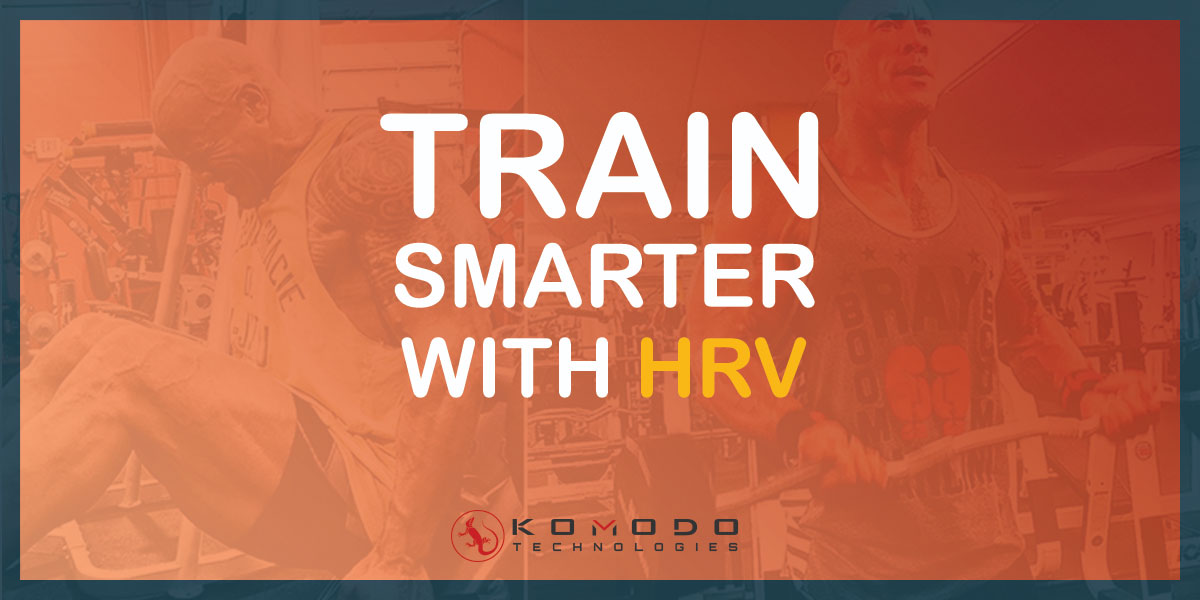

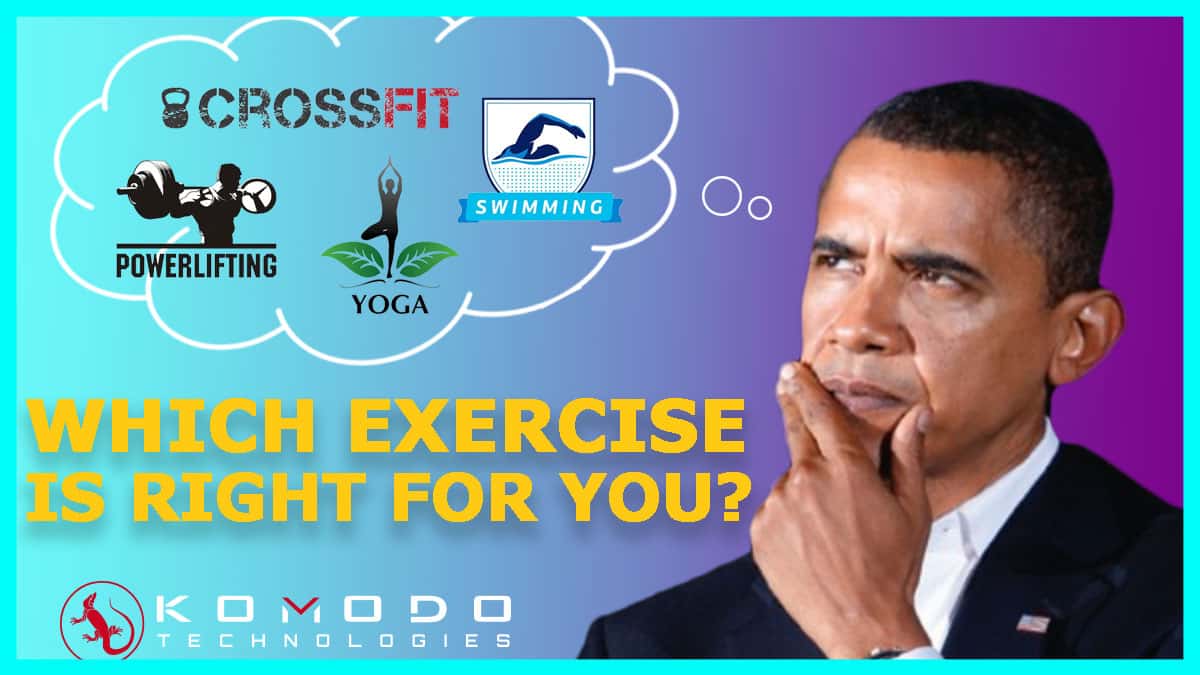






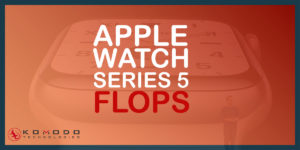

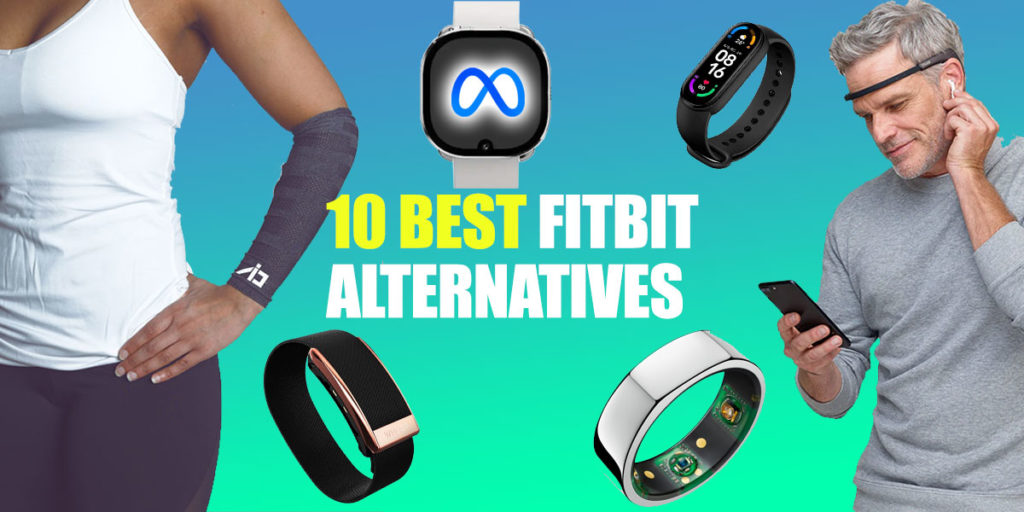


We use heart rate variability with our university swim team at Kansas, it’s fantastic and I would encourage more people to use it in their daily routines
I just don’t think it’s very highly researched yet, nothing conclusive. Maybe once that comes, it will blow up
Are you joking? just do a simple Google search and you’ll find thousands of clinical research, dummy. 🤦♂️
It’s very unfortunate that more people don’t know about heart rate variability. It has many more functions than just fitness/recovery. I think there just needs to be a good enough (and accurate) product out there that people can easily use.
That Qardio company is garbage! They’ve announced that stupid thing like 5 years ago, still haven’t cleared FDA and cmon….$600?!?!?!?!?!?!? I’ll pass
I keep seeing this HRV stuff pop up since that ‘whoop’ company raised $55 million the other month. Seems to be on the uprise